
Capital deposited into Pareto’s FalconX Credit Vault can now be used as collateral on Morpho.
This integration means depositors in the FalconX USDC strategy to borrow directly against their position—represented by CV tokens (Credit Vault tokens)—unlocking new utility for participants in the protocol’s yield strategies.
Eligible users can now borrow USDC at rates around 6–7% APR, directly against their deposits, without exiting their yield position.
Why It Matters
This marks the first time CV tokens from Pareto’s FalconX USDC strategy can be used as collateral within a decentralized lending market. It unlocks new dimensions of utility for what were previously passive yield-bearing assets.
Now, depositors can maintain their credit exposure on Pareto while accessing liquidity through Morpho, opening the door to capital-efficient strategies such as cash flow optimization or portfolio rebalancing. For investors keen to explore more advanced yield strategies, the integration enables looping, where borrowed USDC can be redeposited into the FalconX Vault to amplify exposure. Risk parameters for this strategy are actively curated by Gauntlet, and an automated looping vault—built in collaboration with Aera Finance—is also in development.
More broadly, the integration signals Pareto’s evolution. Its structured yield tokens are no longer isolated instruments but composable building blocks within the broader DeFi ecosystem.
To better capture the moment, we caught up with Pareto Founder Matteo Pandolfi.
What does this development represent in terms of protocol evolution?
This marks a foundational shift in how Pareto credit lines operate – moving from static, yield-bearing instruments to dynamic, collateralizable assets that mirror the utility of repo markets in traditional finance. It’s the first instance where Pareto’s tokenized private credit (via Credit Vault tokens) can be rehypothecated in a trust-minimized, permissionless environment.
Functionally, Pareto Credit Vault tokens are evolving into institutional-grade primitives that unlock liquidity, leverage, and composability, turning DeFi credit into an infrastructure layer rather than a product silo.
What makes this offering unique to the market?
This is the first institutional-grade implementation of a fully onchain, repo-like structure for direct private credit. Unlike tokenized credit products that operate in isolated silos, Pareto CV tokens now serve as composable collateral across DeFi – starting with Morpho.
The integration enables capital-efficient strategies like borrow-to-redeploy, looping, and treasury management, with automated risk calibration via curators like Gauntlet. It’s the first time users gain access to this level of credit transparency, smart contract composability, and institutional borrower exposure within a single, unified framework.
What excites you most about CV token composability going forward?
What’s most exciting is the potential for Credit Vaults to become foundational collateral across multiple DeFi layers, similar to how Treasuries function in traditional money markets. As more protocols recognize CVs as eligible collateral, a full-stack institutional credit infrastructure can emerge: onchain syndication, repo-style funding, reverse repo, leverage management, and risk transfer – all programmable and transparent.
This unlocks use cases far beyond yield, positioning CVs as versatile capital tools for institutional funds, DAOs, and professional liquidity managers.
How To Participate
Here’s a simplified step-by-step of how a Pareto user can interact with this new functionality.
Please Note: This strategy is designed for institutional-scale deposits, with a minimum deposit of $250,000.
1. Deposit into FalconX Strategy on Pareto
Get started by heading to the Pareto’s FalconX vault, connecting your wallet, completing KYC, and depositing USDC.
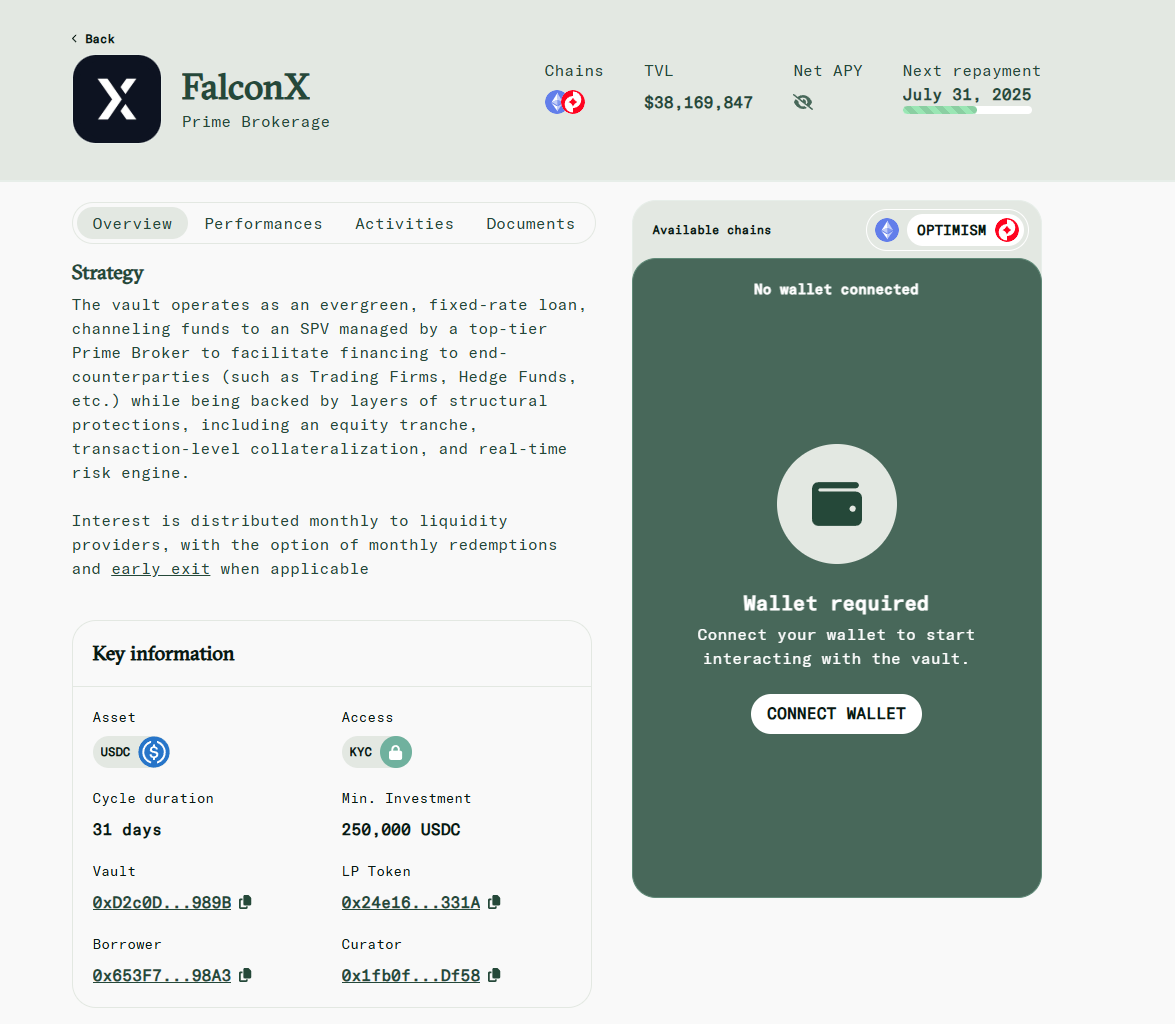
In return, you’ll receive AA_FalconXUSDC CV tokens, which represent your position.
2. Head to the Morpho Market
Visit the AA_FalconXUSDC / USDC market on Morpho and connect your wallet.
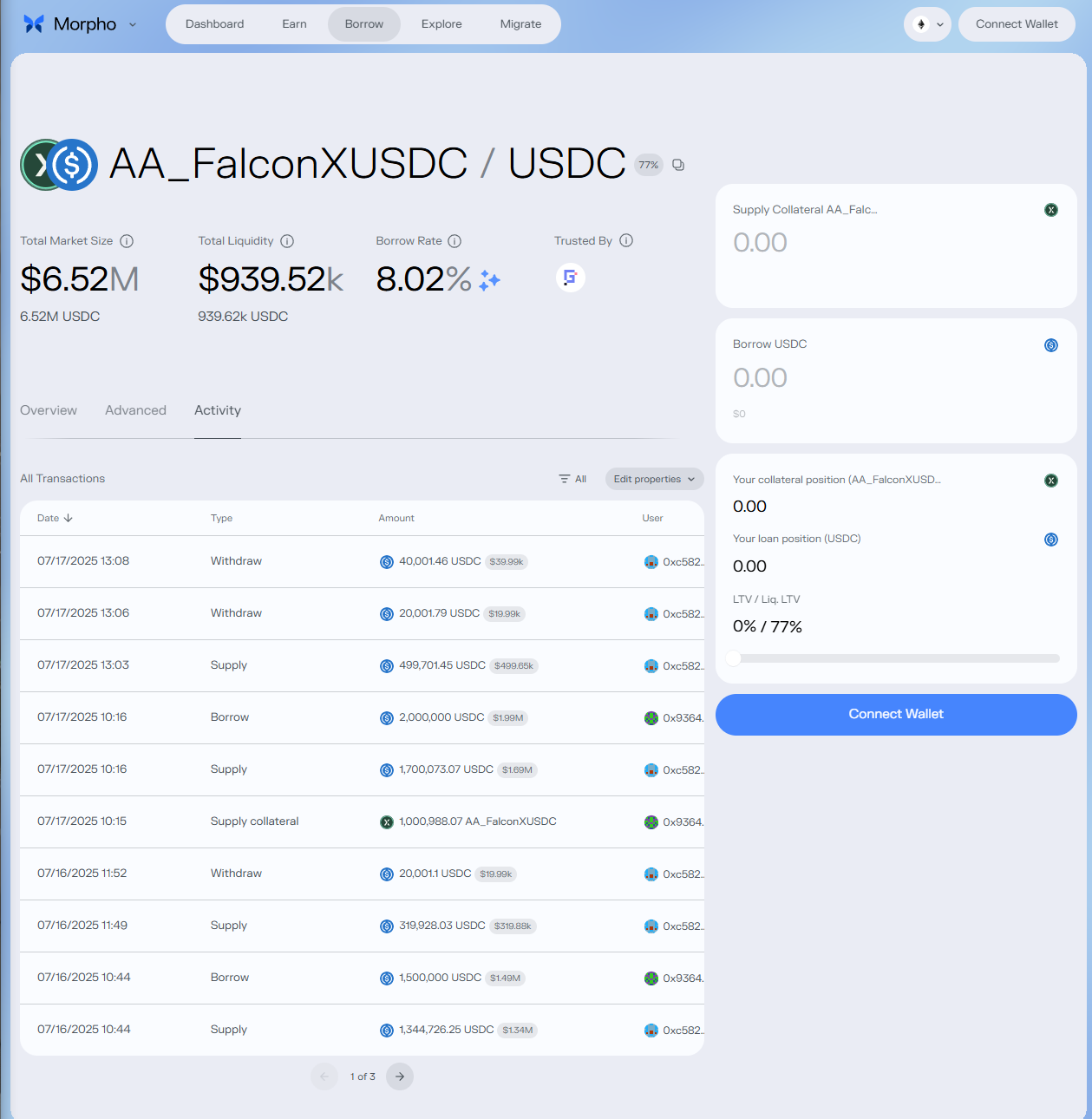
From this dashboard, you’ll see key market metrics including:
- Borrow Rate (currently around 8.02%)
- Liq. Loan-To-Value (77%)
- Total Borrow, Total Supply, and Market Liquidity
- Real-time charts and data trends
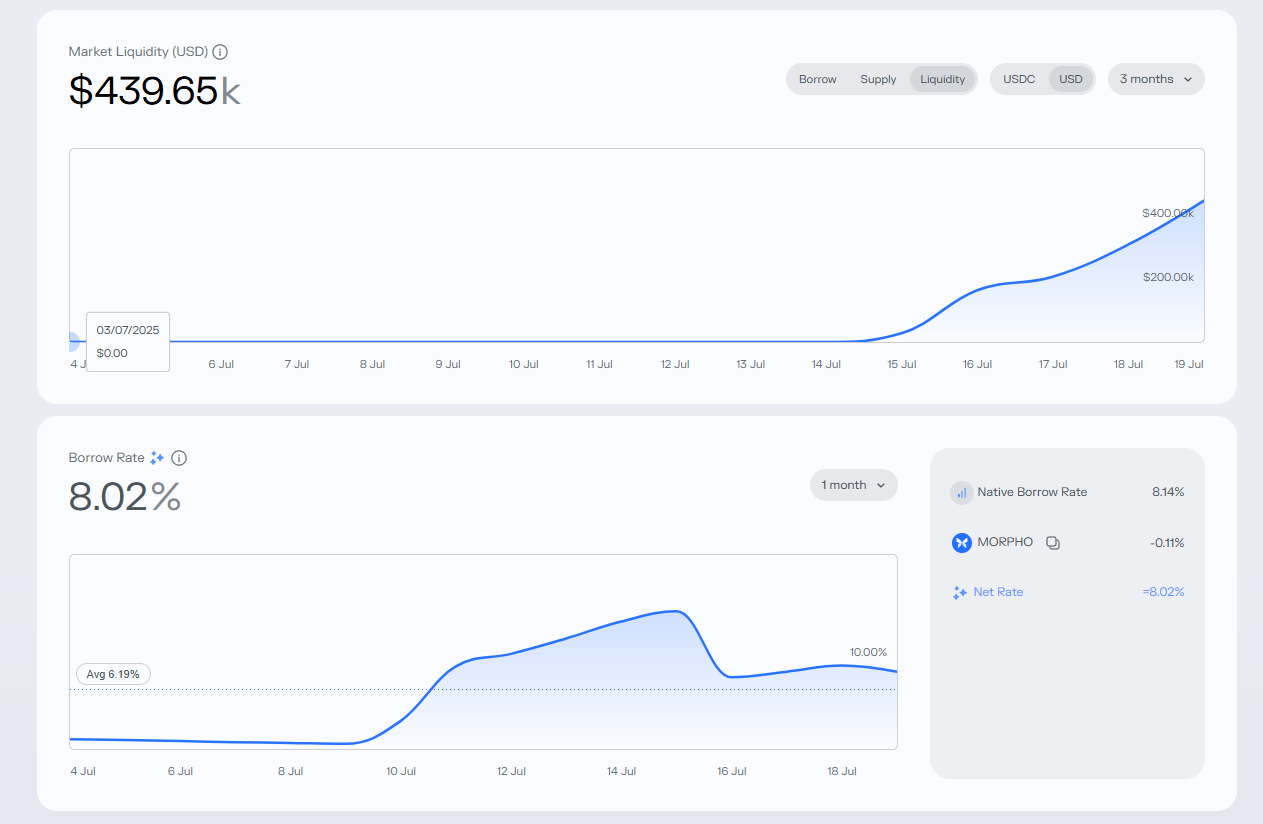
3. Supply CV Tokens as Collateral
In the “Supply Collateral” box on the right-hand panel, enter the amount of AA_FalconXUSDC tokens you want to use as collateral.
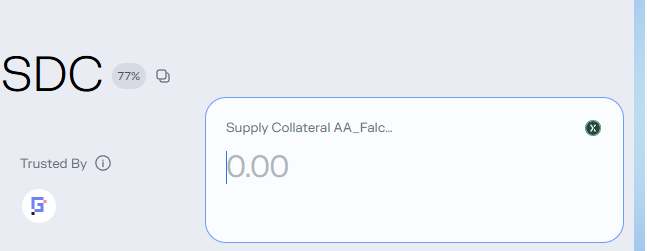
Once supplied, Morpho will display your collateral value, along with your LTV and borrowing capacity.
4. Borrow USDC
In the “Borrow USDC” box, specify the amount you’d like to borrow—up to 77% of your collateral value.
The interface shows a live estimated rate. Based on current values, borrowing is available at around 8%, as reported internally.
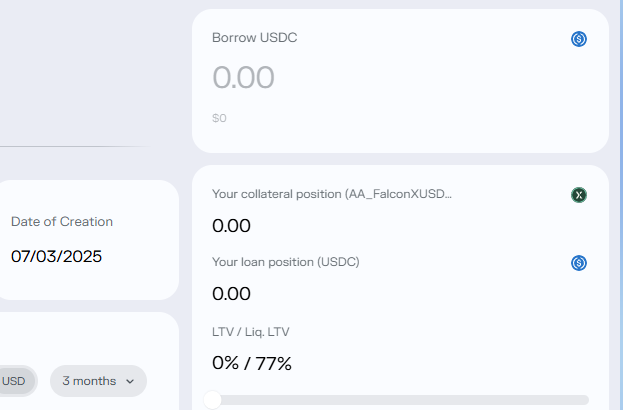
5. Monitor Your Position
After borrowing, you can monitor your health factor, outstanding loan, and collateral value from the same Morpho dashboard.
The AA_FalconXUSDC collateral remains active in its original yield strategy, while also enabling capital access via Morpho.
What's Next
This integration represents more than added utility. It signals a shift toward more dynamic and capital-efficient strategies within the Pareto ecosystem.
By enabling borrowing against FalconX USDC CV tokens, users can unlock liquidity, enhance portfolio flexibility, and redeploy capital without pausing their yield generation.
It is a step toward a more composable DeFi future, where on-chain credit positions evolve from static assets into multi-functional financial instruments.